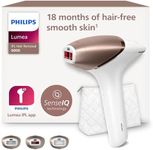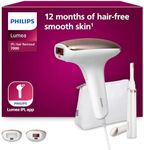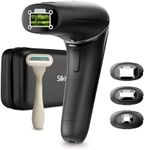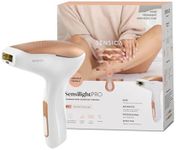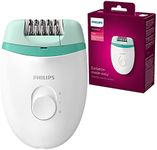Buying Guide for the Best Hair Removal Systems
Choosing the right hair removal system can be a game-changer in your personal grooming routine. With various technologies and features available, it's important to understand what each offers and how they align with your needs. Consider factors such as your skin type, hair color, and the area of the body you wish to treat. By understanding the key specifications, you can make an informed decision that ensures effective and safe hair removal.Technology TypeHair removal systems use different technologies such as laser, IPL (Intense Pulsed Light), and electrolysis. Laser and IPL are popular for their ability to target hair follicles with light, reducing hair growth over time. Electrolysis, on the other hand, uses electrical currents to destroy hair follicles and is often used for permanent hair removal. If you have lighter skin and darker hair, laser and IPL might be more effective. Electrolysis can be suitable for all skin and hair types but requires more sessions.
Skin Tone CompatibilityDifferent hair removal systems are designed to work with specific skin tones. Laser and IPL systems often have limitations and are most effective on lighter skin tones with darker hair. Some advanced models come with sensors to adjust settings based on your skin tone. It's crucial to choose a system that is compatible with your skin tone to avoid skin damage and ensure effectiveness. If you have a darker skin tone, look for devices specifically designed for a wider range of skin tones.
Hair Color CompatibilityThe effectiveness of hair removal systems can vary based on hair color. Laser and IPL systems work best on dark hair because the light targets the pigment in the hair. They may be less effective on light blonde, red, or gray hair. If you have lighter hair, you might need to consider electrolysis, which doesn't rely on hair color. Choose a system that matches your hair color for optimal results.
Treatment AreaConsider the areas of your body you wish to treat. Some systems are designed for larger areas like legs and arms, while others are suitable for smaller, sensitive areas like the face or bikini line. Devices with larger treatment windows can cover more area quickly, making them ideal for larger body parts. For precision on smaller areas, look for systems with smaller treatment heads or attachments.
Power SourceHair removal systems can be corded or cordless. Corded devices offer consistent power and are ideal for longer sessions, while cordless models provide flexibility and portability, making them convenient for travel. Consider your lifestyle and where you plan to use the device. If you need mobility, a cordless option might be better, but for home use, a corded device could be more reliable.
Adjustable SettingsMany hair removal systems come with adjustable settings to cater to different skin sensitivities and hair types. These settings allow you to customize the intensity of the treatment, which is important for comfort and effectiveness. If you have sensitive skin, look for devices with multiple intensity levels so you can start with a lower setting and gradually increase as needed.
Safety FeaturesSafety features are crucial to prevent skin damage and ensure a comfortable experience. Look for systems with skin tone sensors, UV filters, and cooling mechanisms. These features help protect your skin during treatment. If you're new to hair removal systems, prioritize models with comprehensive safety features to minimize the risk of irritation or injury.
